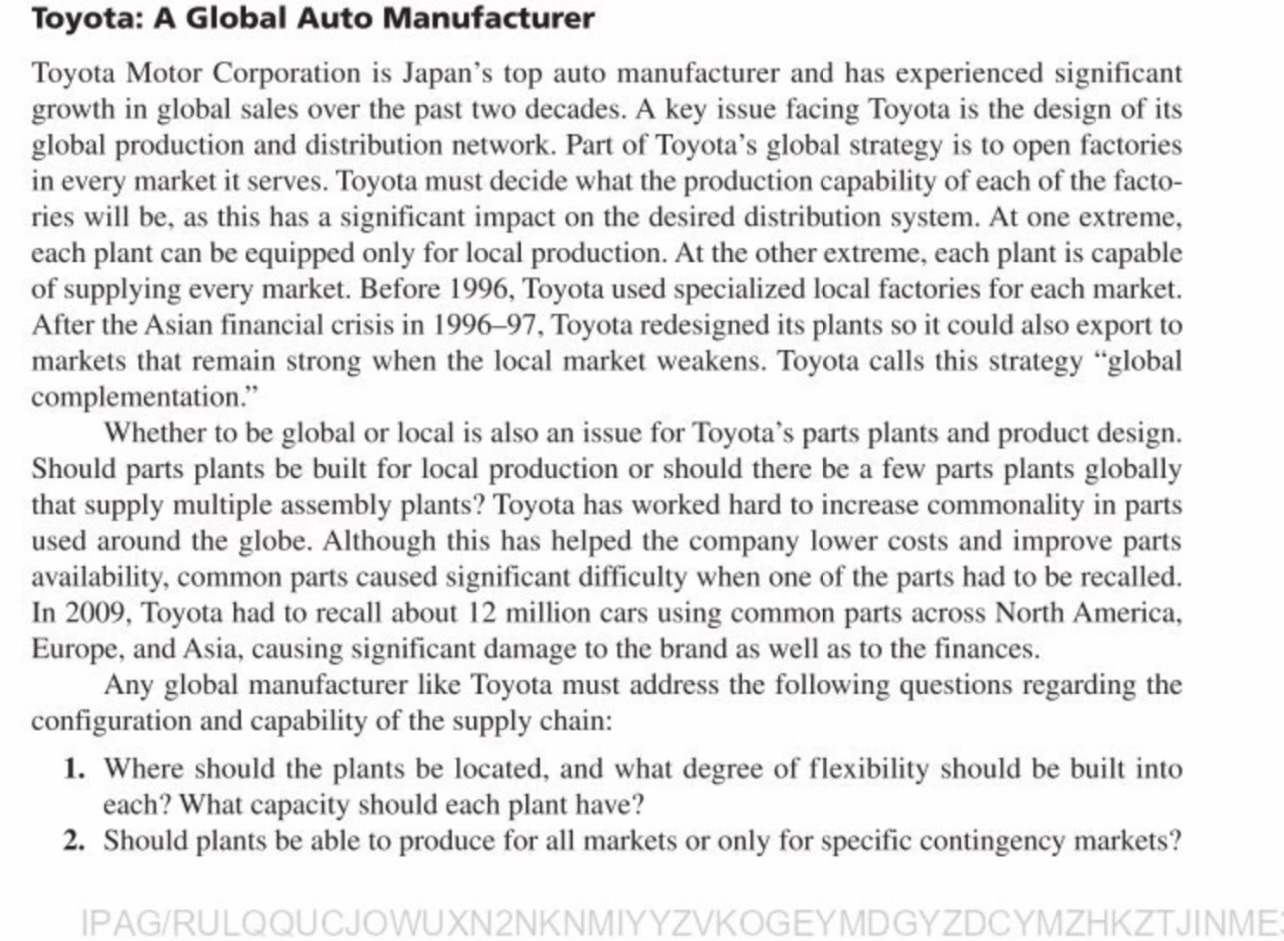Answered step by step
Verified Expert Solution
Question
1 Approved Answer
Toyota: A Global Auto Manufacturer Toyota Motor Corporation is Japan's top auto manufacturer and has experienced significant growth in global sales over the past

Toyota: A Global Auto Manufacturer Toyota Motor Corporation is Japan's top auto manufacturer and has experienced significant growth in global sales over the past two decades. A key issue facing Toyota is the design of its global production and distribution network. Part of Toyota's global strategy is to open factories in every market it serves. Toyota must decide what the production capability of each of the facto- ries will be, as this has a significant impact on the desired distribution system. At one extreme, each plant can be equipped only for local production. At the other extreme, each plant is capable of supplying every market. Before 1996, Toyota used specialized local factories for each market. After the Asian financial crisis in 1996-97, Toyota redesigned its plants so it could also export to markets that remain strong when the local market weakens. Toyota calls this strategy "global complementation." Whether to be global or local is also an issue for Toyota's parts plants and product design. Should parts plants be built for local production or should there be a few parts plants globally that supply multiple assembly plants? Toyota has worked hard to increase commonality in parts used around the globe. Although this has helped the company lower costs and improve parts availability, common parts caused significant difficulty when one of the parts had to be recalled. In 2009, Toyota had to recall about 12 million cars using common parts across North America, Europe, and Asia, causing significant damage to the brand as well as to the finances. Any global manufacturer like Toyota must address the following questions regarding the configuration and capability of the supply chain: 1. Where should the plants be located, and what degree of flexibility should be built into each? What capacity should each plant have? 2. Should plants be able to produce for all markets or only for specific contingency markets? JOWUXN2NKNMIYYZVKOGEYMDGYZDCYMZHKZTJINME IPAG/RULQQU
Step by Step Solution
There are 3 Steps involved in it
Step: 1
1 Where should the plants be located and what degree of flexibility should be built into each What capacity should each plant have Location Toyotas st...
Get Instant Access to Expert-Tailored Solutions
See step-by-step solutions with expert insights and AI powered tools for academic success
Step: 2

Step: 3

Ace Your Homework with AI
Get the answers you need in no time with our AI-driven, step-by-step assistance
Get Started


